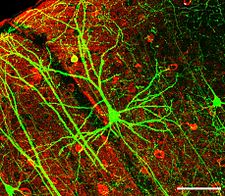Neurology is the branch of medicine that deals with disorders of the nervous system, which include the brain, blood vessels, muscles and nerves. The main areas of neurology are: the autonomic, central and peripheral nervous systems. A physician who works in the field of neurology is called a neurologist; a neurosurgeon treats neurological disorders via surgery.
What training is required to become a neurologist?
After 8 years of medical school, neurologists must complete postgraduate residency for 3 to 4 years. After completion of residency, some neurologists may continue on with fellowships in other areas of neurology. These may include behavioral neurology, clinical neurophysiology, epilepsy, interventional neurology or pain management.
Neurological disorders often differ between infants and young children and adults. Neurological problems in those younger than 18 years are managed by pediatric neurologists. Disorders that affect the pediatric population include: cerebral palsy, complex metabolic diseases, epilepsy, learning disabilities, and nerve and muscle diseases.
After 4 years of medical school, pediatric neurologists complete 5-year post-graduate training comprised of 2 of pediatric training, 1 year in general neurology and 2 years in pediatric neurology.
What are subspecialties within the field of neurology?
- pediatric or child neurology
- neurodevelopmental disabilities
- neuromuscular medicine
- hospice and palliative care neurology
- pain medicine
- headache medicine
- sleep medicine
- vascular neurology
- autonomic disorders
- neuropsychiatry
- brain injury medicine
- neurocritical care
- epilepsy
What conditions do neurologists treat?
Neurologists treat neurological conditions, which are problems that affect the brain, spinal cord, and nerves. These conditions include:
- stroke
- epilepsy
- headaches and migraines
- brain tumors
- brain aneurysms
- peripheral neuropathy
- sleep disorders
- neurodegenerative diseases, such as Parkinson’s disease and Alzheimer’s disease
- neuromuscular diseases, such as myasthenia gravis, multiple sclerosis (MS), and amyotrophic lateral sclerosis (ALS)
- infections of the nervous system, such as encephalitis, meningitis, and HIV

